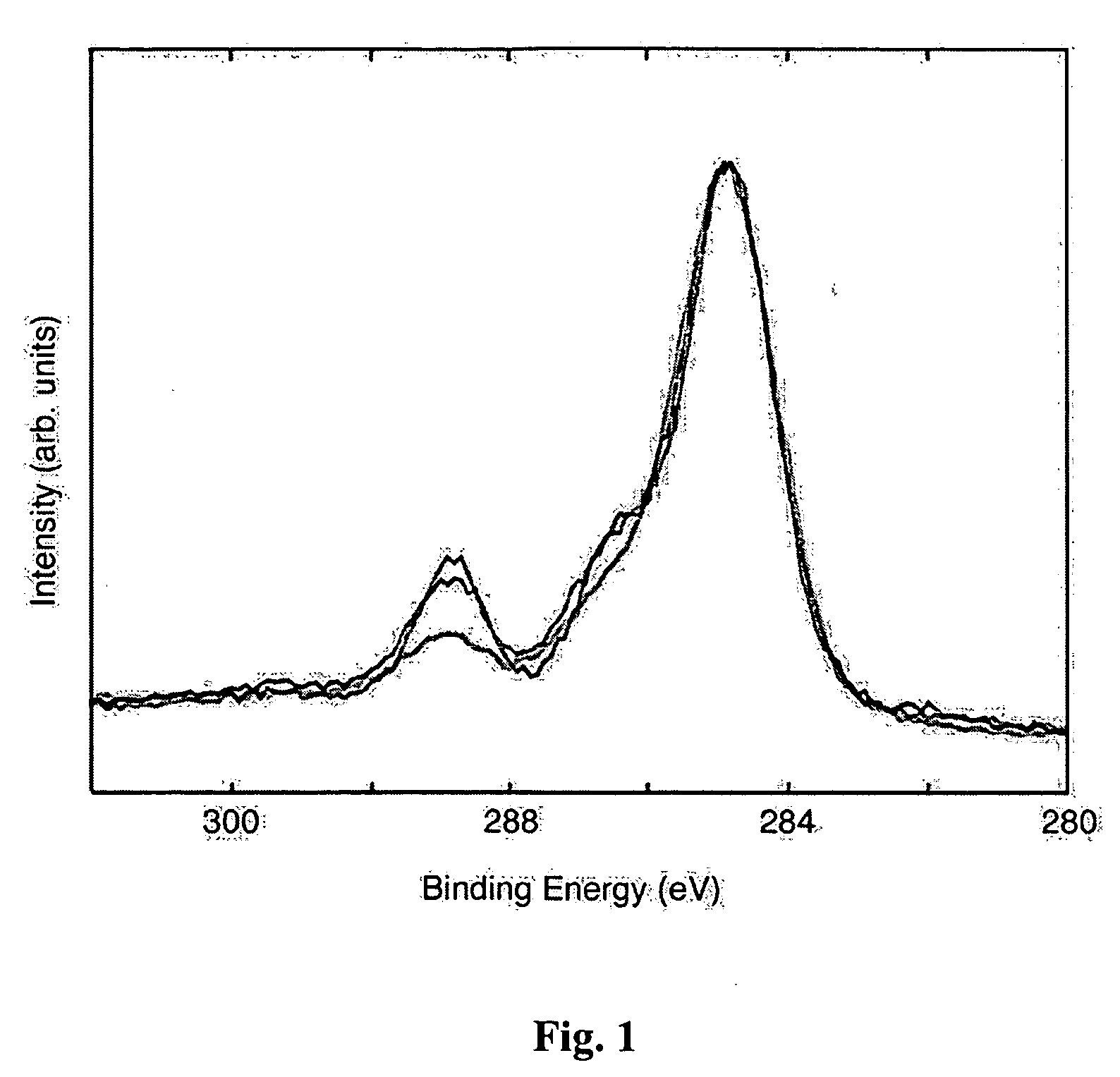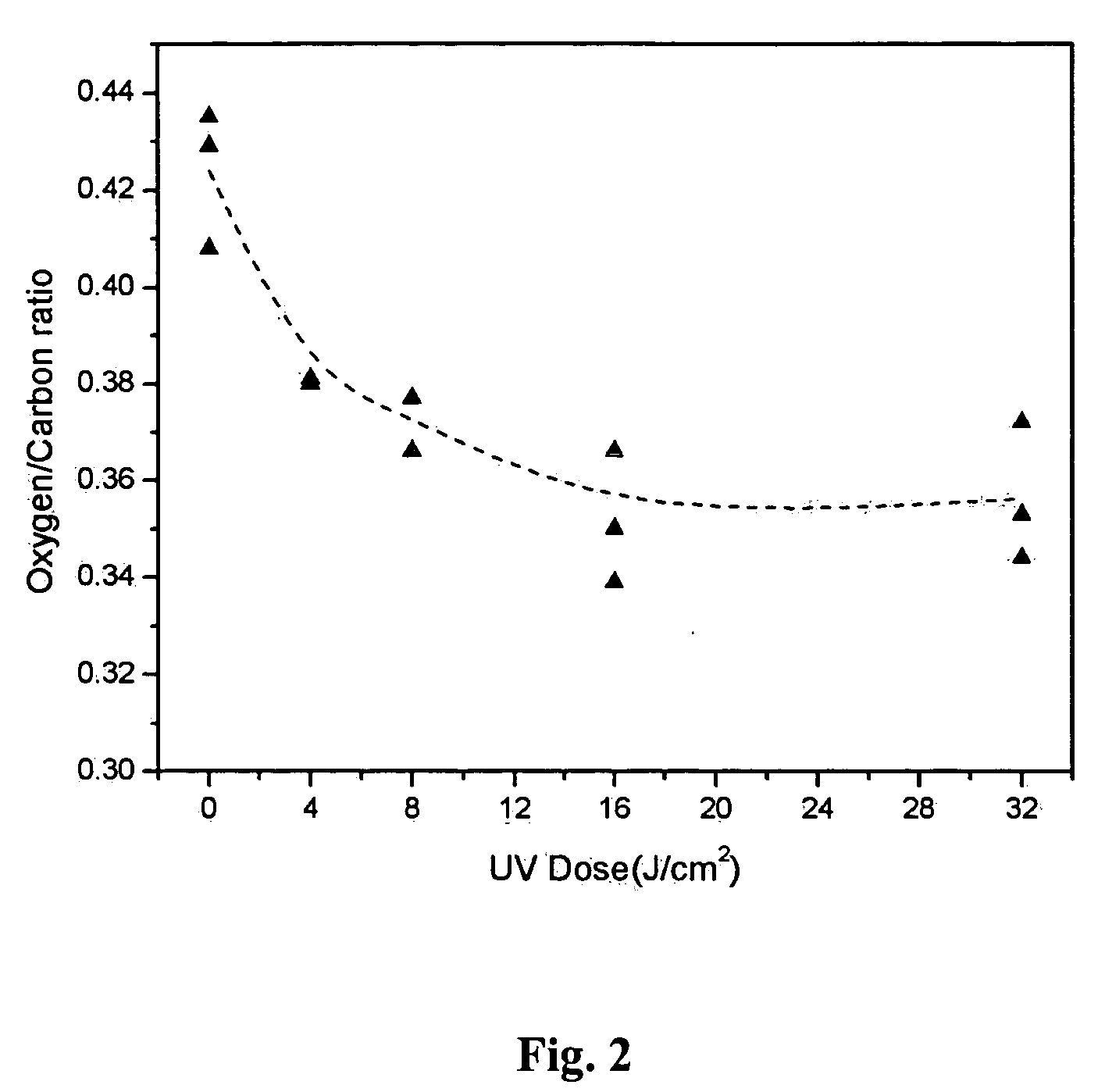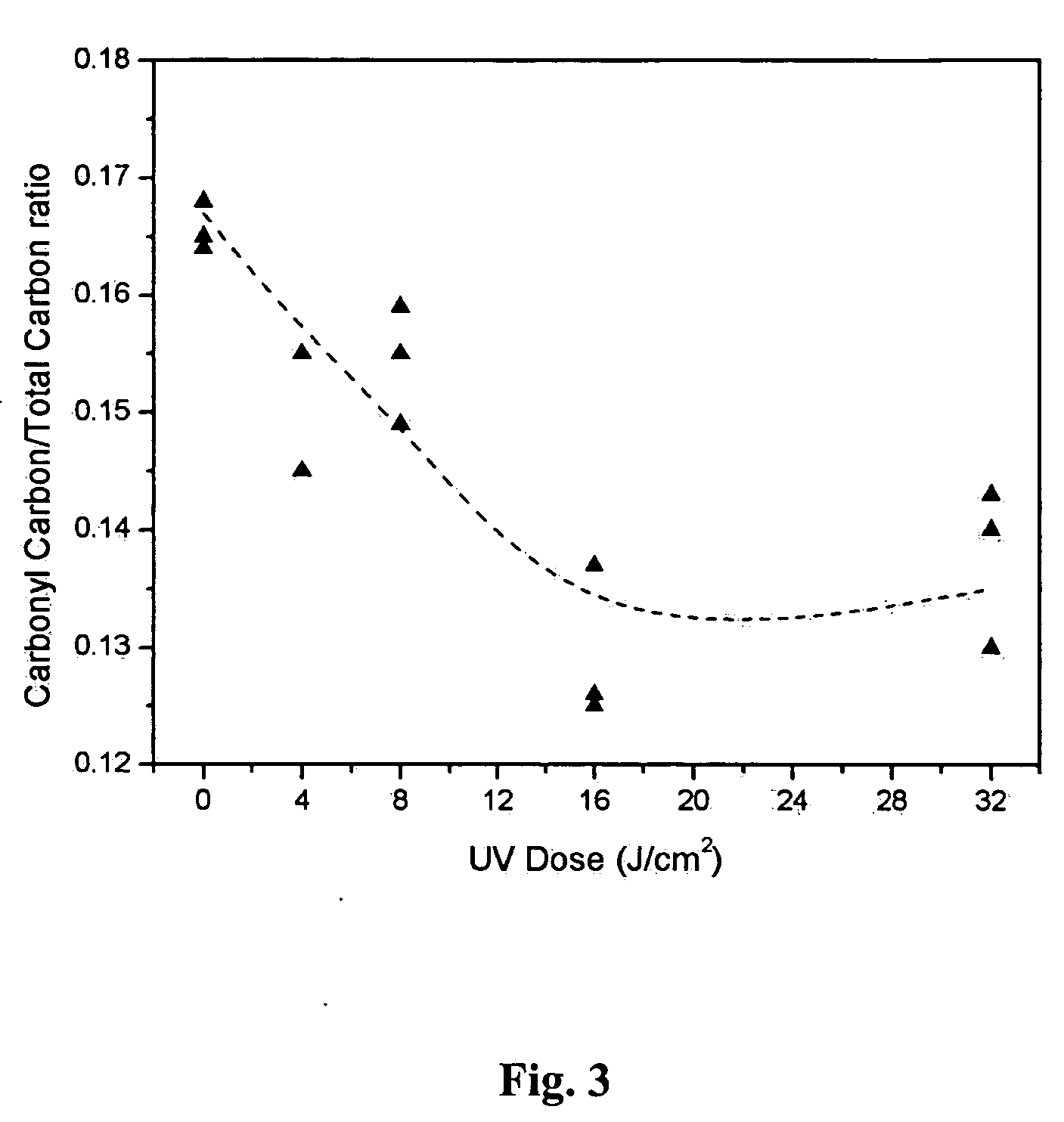Process for modifying polymeric surfaces using deep UV irradiation
a technology polymer surface, which is applied in the field of deep uv radiation treatment of polymeric surfaces, can solve the problems of high cost and process complexity of these materials, difficult to modify the surface of polyester via chemical reaction, and increase cost and process complexity
- Summary
- Abstract
- Description
- Claims
- Application Information
AI Technical Summary
Benefits of technology
Problems solved by technology
Method used
Image
Examples
example 1
[0061] In this example, a polyester film was irradiated but no grafting reagents were used. Films were irradiated using the xenon excimer lamp in accordance with the procedure described above. The resulting treated samples were compared with untreated films, as well as films treated via irradiation at higher wavelengths.
[0062] The interpretation of PET core level spectral lines is well-established. The average intensity ratio of C 1s and O 1s peaks from three untreated PET samples is 10.00 / 4.24, which is close to the nominal value of 10 / 4. FIG. 1 shows data from the C 1s region of the untreated and two laser-treated materials. All spectra were shifted (so that the aliphatic carbon peaks appears at 284.6 eV) and normalized. They were not smoothed. The difference between the untreated material and that irradiated at 248 nm is small. In contrast, it is evident that UW irradiation of intensity 12 mJ / cm2 at 193 nm leads to significant loss of both oxygen-related carbon species.
[0063] T...
example 2
[0068] In this example, 12 μm thick commercial production Mylar® LB 48 film (Dupont) was irradiated at 172 nm using the xenon excimer lamp. During irradiation, vapor phase grafting reagents (either n-nonane or 1-octene) were introduced into the reaction chamber by bubbling nitrogen through neat solutions of the grafting reagents.
[0069] XPS analyses show that both n-nonane and 1-octene were successfully grafted onto PET surfaces using 172 nm UV irradiation, as indicated by the lowered surface oxygen to total carbon ratio. FIG. 7 presents the UV dose dependence of O / C ratio for both nonane-grafted and 1-octene-grafted PET samples analyzed at 90° takeoff angles. The O / C ratio of the n-nonane-grafted sample decreased with increasing UV doses up to about 16 J / cm2, and then returned to a higher O / C ratio upon further increases of UV dose. The increase of O / C ratio beyond 16 J / cm2 is probably due to the disintegration of PET substrate at this dose level. The UV dose dependence of 1-octene...
example 3
[0075] Fluorocarbon HFD, containing an end carbon-carbon double bond, was investigated as a potentially useful grafting agent. In this example, 12 μm thick commercial production Mylar® LB 48 film (Dupont) was irradiated at 172 nm using the xenon excimer lamp. During irradiation, vapor phase HFD was introduced into the reaction chamber by bubbling nitrogen through a neat HFD solution.
[0076] In general, fluorocarbons have very low surface energies, and thus are appealing as anti-soil coatings. FIG. 10 shows the carbon Is region at 90° takeoff angle from HFD-grafted PET (16 J / cm2). The spectrum can be fit by five contributions, assigned to CF3, CF2, C═O, C—O, and C—C, from high binding energy to low binding energy, respectively. Both CF3 and CF2 originate from the grafted layer while the oxygen-containing species are derived from the substrate. FIG. 11 depicts the quantitative results of XPS and water contact angle measurements of HFD-grafted PET samples as a function of UV dose. As w...
PUM
| Property | Measurement | Unit |
|---|---|---|
| Fraction | aaaaa | aaaaa |
| Depth | aaaaa | aaaaa |
| Nanoscale particle size | aaaaa | aaaaa |
Abstract
Description
Claims
Application Information
 Login to View More
Login to View More - R&D
- Intellectual Property
- Life Sciences
- Materials
- Tech Scout
- Unparalleled Data Quality
- Higher Quality Content
- 60% Fewer Hallucinations
Browse by: Latest US Patents, China's latest patents, Technical Efficacy Thesaurus, Application Domain, Technology Topic, Popular Technical Reports.
© 2025 PatSnap. All rights reserved.Legal|Privacy policy|Modern Slavery Act Transparency Statement|Sitemap|About US| Contact US: help@patsnap.com



